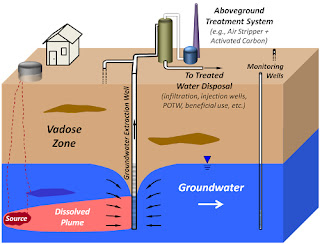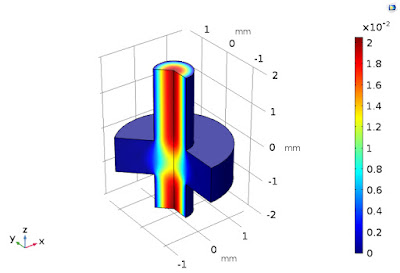Contact Information
Biography
Dr. Kahler teaches fundamental environmental science courses at Duquesne University. His research is in hydrology, primarily for use in international development.
Prior to Duquesne in Fall 2017, Dr. Kahler was a postdoctoral fellow in the Water and Health in Limpopo, South Africa (WHIL) Innovation Program at the University of Virginia (UVA). His primary research at UVA was point-of- use drinking water treatment and water security in rural developing regions. An integral component of his international water security research focuses on the human right to water and water rights; this work is a collaboration with the University of Venda, South Africa. Prior to his research fellowship, he held an AAAS Science and Technology Policy Fellowship and at the Office of Water in the U.S. Agency for International Development. At USAID, Dr. Kahler focused on higher education partnerships between schools in the U.S. and partner countries on water and sanitation, and water resources. Additionally, David worked on agricultural water resources sustainability and was the technical representative for Securing Water for Food, a Grand Challenge for Development, a collaborative effort between the United States, Sweden, and The Netherlands.
Dr. Kahler earned his Ph.D. from Duke University in 2011. His dissertation research focused on the acceleration of pump-and-treat remediation by rapidly pulsed pumping. This work focused on pore-scale fluid mechanics. During graduate school, he was a part of a NSF Graduate Teaching Fellows in K-12 STEM Education program. Through this program, he assisted in a sixth-grade science classroom and ran an after school program that focused on technology encountered in everyday life. He also taught environmental engineering for two summer programs in India.
In his M.S. research at Cornell University, Dr. Kahler studied trends in observed evapotranspiration and precipitation, the so-called evaporation paradox. Through different measurement techniques, he determined that pan evaporation does not measure evaporation and even can show the opposite trend than actual evaporation. Dr. Kahler’s was graduated with a B.A. in Physics and Mathematics with a minor in Environmental Studies from Skidmore College in Saratoga Springs, New York. He spent most of his undergraduate summers as a Ranger at Philmont Scout Ranch in Cimarron, New Mexico.
Education
- Postdoctoral Research Fellow, University of Virginia, 2014-17
- Science and Technology Policy Fellow, AAAS, 2012-14
- Ph.D., Civil and Environmental Engineering, Duke University, 2011
- M.S., Civil and Environmental Engineering, Duke University, 2009
- M.S., Civil and Environmental Engineering, Cornell University, 2005
- B.A., Physics and Mathematics, Skidmore College, 2002
Profile Information
Peer-reviewed
- Shibambu, T. H.; Kahler, D. M.; Rose, K. C.; Riddell, E.; Oyebanjo, O. M.; Edokpayi, J. N. Comprehensive Monitoring of the Spatiotemporal Variation of Water Quality and Its Associated Human Health Risks in Luvuvhu River Catchment, Vhembe Biosphere Reserve, South Africa. Scientific Reports, 2025, 15(1), 36319.
- Bakar, S. A.; Whitewood, A.; Glancey, K.; Okular, K.; Bachtlin, A.; Kahler, D. M. Fluoride in Drinking Water and Tea in the Arusha Region of Tanzania. Water, 2025, 17(4), 546.
- Mukhawana, M. B.; Kanyerere, T.; Kahler, D.; Masilela, N. S.; Lalumbe, L.; Umunezero, A. A. Hydrological Drought Assessment Using the Standardized Groundwater Index and the Standardized Precipitation Index in the Berg River Catchment, South Africa. Journal of Hydrology: Regional Studies, 2024, 53, 101779.
- Mukhawana, M. B.; Kanyerere, T.; Kahler, D.; Masilela, N. S. Application of the Standardised Streamflow Index for Hydrological Drought Monitoring in the Western Cape Province, South Africa: A Case Study in the Berg River Catchment. Water, 2023, 15(14), 2530.
- Mukhawana, M. B.; Kanyerere, T.; Kahler, D. M. Review of In-Situ and Remote Sensing-Based Indices and Their Applicability for Integrated Drought Monitoring in South Africa. Water, 2023, 15(2).
- Gardner, J. R.; Doyle, M. W.; Ensign, S. H.; Kahler, D. M. A New Metric for Sunlight Exposure in Rivers, Lakes, and Oceans. Limnology and Oceanography Letters, 2023.
- Vodicka, M.; Trapani, J.; Diasio, M.; Simpkins, C. W.; Gordon, R.; Shapiro, A. R.; Kahler, D. M.; Goldberg, I.; Zarei, K. Readings for a Season of Reflection. Science, 2022, 377(6610), 1036–1041.
- Lange, C. L.; Smith, V. A.; Kahler, D. M. Pittsburgh Air Pollution Changes During the COVID-19 Lockdown. Environmental Advances, 2022, 7, 100149.
- Jackson, K. N.; Kahler, D. M.; Kucharska, I.; Rekosh, D.; Hammarskjold, M.-L.; Smith, J. A. Inactivation of MS2 Bacteriophage and Adenovirus with Silver and Copper in Solution and Embedded in Ceramic Water Filters. Journal of Environmental Engineering, 2020, 146(3), 04019130.
- Hill, C. L.; McCain, K.; Nyathi, M. E.; Edokpayi, J. N.; Kahler, D. M.; Operario, D. J.; Taylor, D. D. J.; Wright, N. C.; Smith, J. A.; Guerrant, R. L.; Samie, A.; Dillingham, R. A.; Bessong, P. O.; Rogawski McQuade, E. T. Impact of Low-Cost Point-of-Use Water Treatment Technologies on Enteric Infections and Growth among Children in Limpopo, South Africa. American Journal of Tropical Medicine and Hygiene, 2020, 103(4).
- Kahler, D. M.; Kabala, Z. J. Acceleration of Groundwater Remediation by Rapidly Pulsed Pumping: Laboratory Column Tests. Journal of Environmental Engineering, 2019, 145(1), 06018009.
- Kahler, D. M.; Kabala, Z. J. Rapidly Pulsed Pumping Accelerates Remediation in a Vertical Circulation Well Model. Water, 2018, 10(10), 1423.
- Edokpayi, J. N.; Rogawski, E. T.; Kahler, D. M.; Hill, C. L.; Reynolds, C. F.; Nyathi, E.; Smith, J. A.; Odiyo, J. O.; Samie, A.; Bessong, P. O.; Dillingham, R. A. Challenges to Sustainable Safe Drinking Water: A Case Study of Water Quality and Use across Seasons in Rural Communities in Limpopo Province, South Africa. Water, 2018, 10(2), 159.
- Himes, K. E.; McCormick, C.; Bowser, G.; Keen, J.; Kahler, D. M.; Ferland-Beckham, C.; Johnson, M.-V. V.; Pershell, K. Fall into a New Book. Science, 2017, 357(6355), 964–969.
- Kahler, D. M.; Koermer, N. T.; Reichl, A. R.; Samie, A.; Smith, J. A. Performance and Acceptance of Novel Silver-Impregnated Ceramic Cubes for Drinking Water Treatment in Two Field Sites: Limpopo Province, South Africa and Dodoma Region, Tanzania. Water, 2016, 8(3), 95.
- Kahler, D. M.; Kabala, Z. J. Acceleration of Groundwater Remediation by Deep Sweeps and Vortex Ejections Induced by Rapidly Pulsed Pumping. Water Resources Research, 2016, 52(5), 3930–3940.
- Kahler, D. M.; Brutsaert, W. Complementary Relationship between Daily Evaporation in the Environment and Pan Evaporation. Water Resources Research, 2006, 42(5).
Presentations
- Glancey, K. M., Martin, M. L., Edokpayi, J. N., & Kahler, D. M. (2018). Removal of Excess Fluoride from Drinking-Water by Adsorption: Results from Mixed Smectite Clay and Diceriocayum eriocarpum. American Geophysical Union Fall Meeting (H31J-2031). Washington, DC.
- Martin, M. L., Glancey, K. M., & Kahler, D. M. (2018). Method Development for Remote Sensing of River Flow with Limited Ground-Based Measurements. In American Geophysical Union Fall Meeting (H43G-2504). Washington, DC.
- Kahler, D. M., N. T. Koermer, A. R. Reichl, A. Samie, and J. A. Smith (2016), Performance and acceptance of a novel silver-impregnated ceramic tablet for drinking water treatment in Limpopo Province, South Africa. Accepted oral presentation. 2016 World Environmental and Water Resources Congress, West Palm Beach, Florida, May 2016.
- Kahler, D. M. and J. A. Smith, (2015). Numerical models of a silver-based drinking water treatment technology. Accepted oral presentation. The Water Conference, University of Oklahoma, Norman, Oklahoma, September 2015.
- Kahler, D. M. and Z. J. Kabala (2012), Novel Technology to Promote Mixing in Dead-End Pores Could Improve Pump-and-Treat, 2012 Fall Meeting, American Geophysical Union, San Francisco, CA, 3-7 December, Abstract H11A-1159.
- Kahler, D. M. and W. Brutsaert (2005), Actual and Apparent Evapotranspiration in the Environment: A Study Toward the Resolution of the Evaporation Paradox, Eos Trans. AGU, 86(18), Jt. Assem. Suppl., Abstract H23B-10.
Academic
- Kahler, D. M. (2011), The Acceleration of the Diffusion-Limited Pump-and-Treat Aquifer Remediation with Pulsed Pumping that Generates Deep Sweeps and Vortex Ejections in Dead-End Pores, Duke University.
- Kahler, D. M. (2005), The Complementary Relationship for Daily Evaporation in the Environment, Cornell University.
Water Resources Management
The transboundary Limpopo River Basin crosses Botswana, Zimbabwe, South Africa, and Mozambique. At over 400,000 km2, the Limpopo Basin is home to 18 million people living in both rural and urban areas. Industries in the Basin include businesses in the urban areas and water-intensive uses such as agriculture and mining; industrial water use is growing rapidly. In addition to the human residents, the Basin contains some of the most biodiverse natural areas on the planet including Kruger National Park and the UNESCO Vhembe Biosphere Reserve.
Over the past few years, my research team has worked in the Mutale River tributary of the Limpopo River. The challenges facing the Mutale River valley and surrounding communities are emblematic of issues facing other areas throughout the Limpopo River Basin. For example, many agricultural operations withdraw water from the Mutale River and the local water treatment facility operators have identified these withdrawals as an important unaccounted stressor on water resources availability and quality. In order to monitor water withdrawals, the Department of Water and Sanitation operates a river gage in the Mutale River. Unfortunately, the monitoring data are often inaccurate and unreliable. Thus, it is not known what impact agricultural water withdrawals have on water resources in the area. Furthermore, while previous assessments have been done, it is unknown if withdrawals and other uses have increased or the degree to which previous assessments are biased due to monitoring inaccuracies. In summary, the lack of appropriate management of water in the Mutale valley, and Limpopo Basin more generally, is severely hindered by a lack of quality data, and internal capacity and reliance.
Through a generous grant from the United States Agency for International Development, we are now investigating water resources and biodiversity throughout key areas in the Limpopo River Basin. For more information on this project, visit the project website.
Water Scarcity in Tanzania
My research group is involved with research to support the Pure Thirst group at Duquesne. Pure Thirst and our research are focused on a rural mountain community in northern Tanzania. Key water issues that face the residents are:
- Microbial pathogens
- Excess fluoride from the geothermal area
- Aging distribution system
- Water infrastructure availability in key areas: the school and the clinic
Supported by the Paluse Faculty Research Grant, Bayer School of Natural and Environmental Sciences Office of the Dean, and the Honors College, students work on sustainable solutions to these challenges.
In 2019, a weather station was installed to help monitor the water resources in the area.
Data can be found at: Olkokola Meteorological Station
Groundwater Remediation
Groundwater is a critical resource as the largest reservoir of liquid fresh water. Water systems that supply approximately one-third of customers in the U.S. and 98% household well withdrawals depend on safe groundwater. Unfortunately, groundwater is vulnerable to contamination by a large range of hazardous materials. Remediation of these contaminants is needed to return the aquifer to a usable condition; however, these efforts are lengthy and expensive.

Schematic of a typical pump-and-treat groundwater remediation. Image from the Pacific Northwest National Laboratories, US Department of Energy.
The most common method is pump-and-treat either alone or in conjunction with another technology. This approach uses pumps to remove contaminated water from an aquifer. One major bottleneck to remediation is that contaminants become trapped in pores that do not have a flow into and out of the pore; these pores have a dead end and thus are termed dead-end pores. Contaminants in these dead-end pores can remain in groundwater despite extensive treatment and release contaminant back into the aquifer after treatment.

Flow through porous media. (left inset) A poorly connected pore is in contact with the flow; however, the flow does not enter such an arrangement under steady flow. Molecular diffusion is the only mechanism that allows transport of contaminants between the two pore types. (right inset) Well-connected pores do not have any stable, isolated eddies and the fluid volume can be advected through them. Figure and caption from Kahler and Kabala [2015], Image credit: Daphne Ching.
The US Environmental Protection Agency identified a serious and common problem in pump-and-treat remediation sites: after remediation ends and without external sources, contaminant levels in the aquifer rise again to unacceptable levels; this is known as rebound. There are several categories of sources for contaminant; however, the current work here focuses on matrix diffusion from dead-end pores. The only way that contaminant leaves dead-end pores is by diffusion. Rebound can pose a serious health risk to those who rely on the aquifer for water supply and will inevitably result in an expensive redeployment of remediation equipment.

Velocity (shown in m/s by color) of an axisymmetric dead-end pore of 0.001 m diameter with the expansion of 0.003 m diameter. Computational fluid dynamics (CFD) software is used to show the potential cleanup of remediation strategies.
Numerical and laboratory experiments confirm that sudden changes in flow rate can alter the fluid dynamics into and around these pores and improve contaminant removal. Rapidly pulsed flow (with a period on the order of one second) achieves significantly better contaminant removal than steady flow. These processes have not yet been fully exploited in groundwater remediation. Implementation of rapidly pulsed technology would utilize the same extraction and injection wells currently used in pump-and-treat remediation but could require replacement or modification of the pumps. Further research into this will include large-scale testing of rapidly pulsed pumping and improvements to numerical models to include various sorption processes and contaminant types.
ENVI 251: Principles of Environmental Science, 3 cr., Spring
Environmental science is the study of the interaction between humans and the environment. This course will employ lectures, reading discussion and films to enable students to recognize the complex array of fact and theory that comprises this multi-disciplinary field. Students will understand the key elements of the physical and social sciences that make up this discipline, and apply quantitative and qualitative research methods to the analysis of environmental issues present in today's society and economy.
ENVI 580: Fluid Mechanics, alternate Fall
Fluid mechanics investigates hydrostatics, kinematics, and dynamics, and the basic equations of incompressible flow. The specific examples that will be considered include potential flow, static and dynamic forces, viscous flow, shear forces, steady pipe flow, and open channel flow. We will rely on dimensional analysis, calculus, and physics. Special topics will include turbulence and include group laboratory activities. Pre-requisite: Calculus I, Physics I (any college mechanics & dynamics).
ENVI 549: Fate and Transport, 3 cr., Spring
The primary focus of quantitative methods is the fate and transport of materials in the environment. Topics include chemical equilibrium reactions, movement of admixtures in the environment, diffusion, turbulent mixing, and common computer models.
ENVI 591: Hydrogeology, 3 cr., alternate Fall
Hydrogeology includes general hydrology and a specific focus on groundwater and geochemical interactions. The course considers the movement of water on the surface (streams, wetlands, lakes, estuaries, etc.) and subsurface (porosity, permeability, flow paths, Darcy's Law, etc.), and air as a component of the water cycle. Concepts dealing with water management, pollution, remediation and prevention will be covered. Common computer models will also be considered.
ENVI 456/556: Water, Environment, and Development, 3 cr., Fall
In this course, students will examine the complex issues around water security around the globe. Topics will include fundamental concepts such as the water cycle, water chemistry, and hydrology as well as applied concepts such as potable water supplies, agricultural water management, and transboundary water issues. Additionally, policy and regulation will also be considered along with the roles of individuals, community leaders, governments (state/national), financial institutions, and non-governmental organizations and aid-agencies.
Satisfies Theme Areas: Global Diversity, Social Justice.


